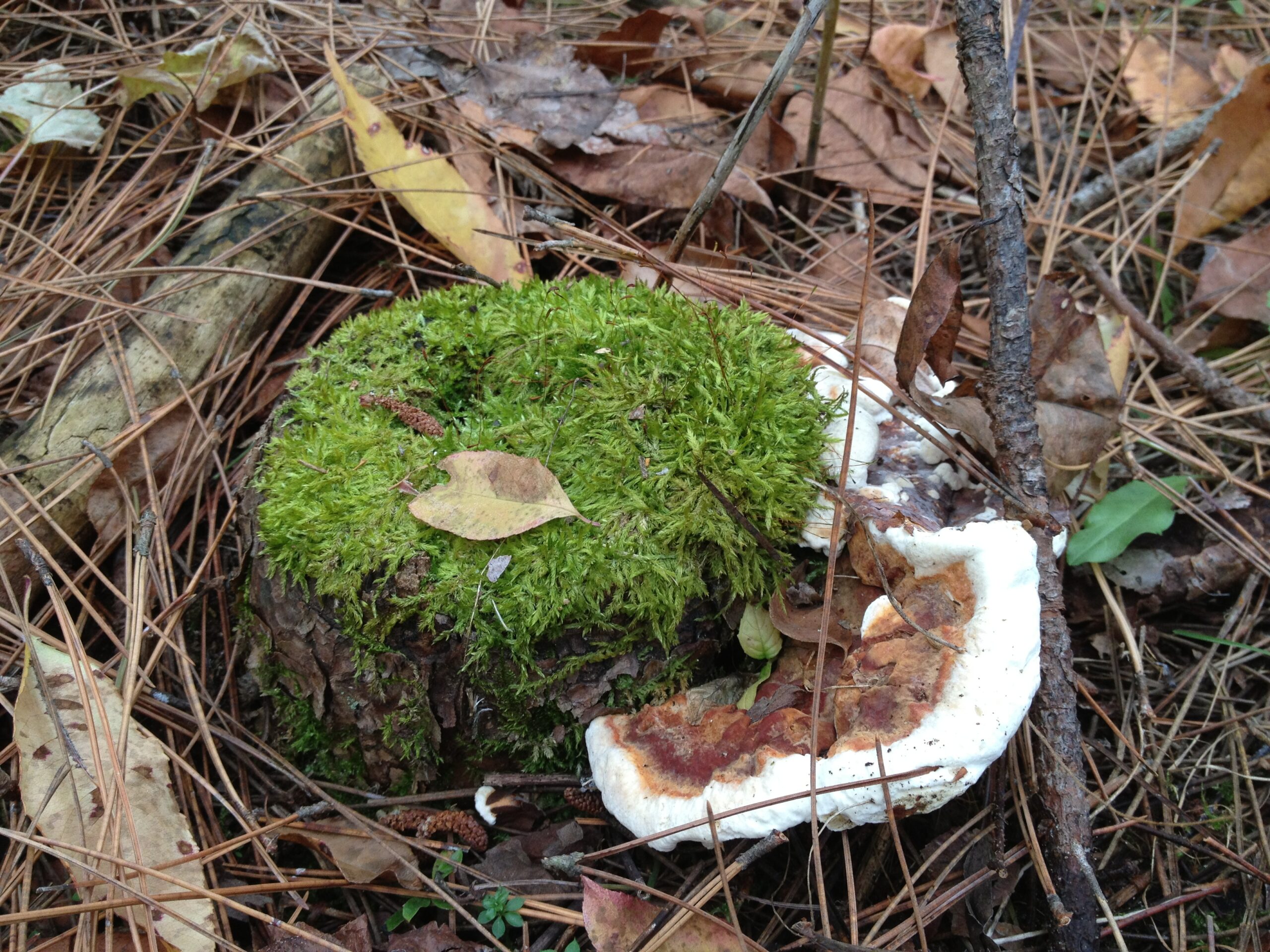By Michael Hillstrom, DNR Forest Health Specialist, Fitchburg, michael.hillstrom@wisconsin.gov
Considered one of the most destructive diseases of conifers in the northern hemisphere, Heterobasidion root disease (HRD) is very difficult to control once established in a forest. Infestation of a conifer stand may significantly impact stand management, making early detection essential.

A Heterobasidion root disease (HRD) fruit body with new white growth observed in the fall. Photo: Wisconsin DNR
In fall, look for white growth both on new and previous years’ fruit bodies. It may be necessary to scrape away needles and other debris at the base of conifers to find the fruit bodies. The Wisconsin DNR Forest Health Team maintains a web map with all known locations of HRD. Please report new finds to your local forest health specialist.
HRD infestation typically occurs when spores from the fruit bodies land on freshly cut conifer stumps. The HRD fungus then spreads via grafted roots to nearby conifers. When scouting for HRD, remember to check stumps from previous thinnings because fruit bodies might not show up for 3-8 years after an initial infestation. Also check dead or dying seedlings and saplings for signs of HRD.
More information about HRD and other conifer diseases is available on the DNR website.
